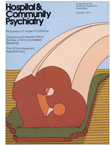The JCAH Consolidated Standards: Questions and Answers
Abstract
In early 1979 the Joint Commission on Accreditation of Hospitals published a manual consolidating standards for adult psychiatric, child and adolescent, alcoholism, and drug abuse programs. The standards became effective on October 1, 1979. Instead of reviewing separately each kind of program within a facility, surveyors will conduct a simultaneous, four-part survey in which they review all aspects of services related to the four groups of standards: those for program management, patient management (intake, assessment, and treatment plans), patient services, and facility management. The new standards specify a minimum of six kinds of quality assurance activities and stress a clinical staff organization that has developed a comprehensive quality assurance system. They reflect a service-system concept more applicable to a variety of age and disability groups than to the treatment models on which the earlier adult psychiatric and child and adolescent standards were heavily based.
Access content
To read the fulltext, please use one of the options below to sign in or purchase access.- Personal login
- Institutional Login
- Sign in via OpenAthens
- Register for access
-
Please login/register if you wish to pair your device and check access availability.
Not a subscriber?
PsychiatryOnline subscription options offer access to the DSM-5 library, books, journals, CME, and patient resources. This all-in-one virtual library provides psychiatrists and mental health professionals with key resources for diagnosis, treatment, research, and professional development.
Need more help? PsychiatryOnline Customer Service may be reached by emailing [email protected] or by calling 800-368-5777 (in the U.S.) or 703-907-7322 (outside the U.S.).



